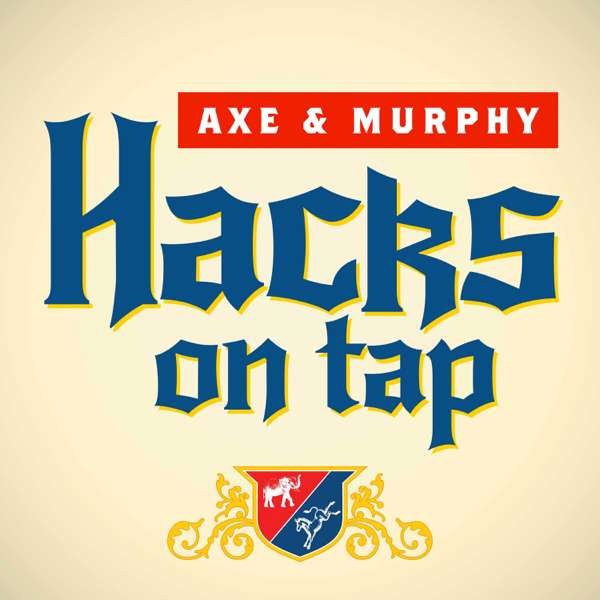On this episode of SecuraBit:
Multiboot Security DVD
Mubix posted an awesome link on his blog to a Multiboot Security DVD that allows you to choose which common security distros, all on one medium!
OS Choices:
Backtrack 3
Damn Small Linux 4.2.5
GeeXBoX 1.1 (not geekbox )
Damn Vulnerable Linux (Strychnine) 1.4
Knoppix 5.1.1
MPentoo 2006.1
Ophcrack 1.2.2 (with 720 mb tables)
Puppy Linux 3.01
Byzantine OS i586-20040404
Make a bootable FAT32 USB stick using Unetbootin
Some distros the Securabit guys would like to see added:
Helix Intelguardians Samurai
RedHat/Fedora OpenSSH Compromises
As noted on the Securabit website, a Fedora and Red Hat Enterprise Linux servers were compromised.
The ComputerWorld Blog - Linux Security Idiots article explains how the servers were compromised
-Stolen SSH keys are used to gain access to the system
-After that, rootkit "phalanx2" is installed and steals more SSH keys
-Obviously this could be used to install any malware at all
The RHEL offshoot CentOS was not affected by the compromise.
Joomla Vulnerability
US CERT Joomla! Password Reset Vulnerability
Joomla Core Exploit Announcement - Password Remind Functionality
Joomla user password reset vulnerability being actively exploited
BREAK
After Break Banter
Italy tries to ban PirateBay
Awesome Quote: "Fear makes the wolf look bigger"
Best Western Pwned
Originally Discovered by The Sunday Herald. As many as 8 million accounts compromised
Best Western Response
Vulnerbilty of BGP
This exploit of Border Gateway Protocol allows the attacker to monitor internet traffic and forward it to anywhere in the world. Five hours of traffic was forwarded to New York during Defcon 16. This vulnerability is going to be bigger than the Kaminsky DNS Vuln. Speaking of Dan, he loves Securabit!
Defcon presentation from Anton Kapela and Alex Pilosov
Border Gateway Protocol
Wired - Revealed: The Internet's Biggest Security Hole
Wired - More on BGP Attacks -- Updated
The Middler
Jay Beale - Middler - Release it already! DefCon Talk
Audio Steganography
Hiding information by slightly altering the binary sequence of a sound file
From simple algorithms that insert info in the form of signal noise, to more powerful methods that exploit sophisticated signal processing techniques to hide information.
LSB coding (least significant bit):  substitute with a binary msg
Parity coding
Phase coding:  #  The original sound signal is broken up into smaller segments whose lengths equal the size of the message to be encoded.
A Discrete Fourier Transform (DFT) is applied to each segment to create a matrix of the phases and Fourier transform magnitudes.
Phase differences between adjacent segments are calculated.
Phase shifts between consecutive segments are easily detected. In other words, the absolute phases of the segments can be changed but the relative phase differences between adjacent segments must be preserved. Therefore the secret message is only inserted in the phase vector of the first signal segment as follows:
Spread spectrum
Two versions of SS can be used in audio steganography: the direct-sequence and frequency-hopping schemes. In direct-sequence SS, the secret message is spread out by a constant called the chip rate and then modulated with a pseudorandom signal. It is then interleaved with the cover-signal. In frequency-hopping SS, the audio file's frequency spectrum is altered so that it hops rapidly between frequencies.
Least Significant Bit
BREAK
Security Justice stops by
Tom and Dave from Security Justice
-Search for pics of Mubix gets you this
-Shmoocon will have another Podcasters Meetup and Hak5 will be there.
-List of Hacker/Security Con's
Forensic recovery on SSD
SSD Forensics:
- no physical security hooks that prevent them from being removed from enclosures
- ultraviolet laser to wipe out lock bits (encryption) from fuses on chips that secure SSDs
- overall easier to erase data on SSD (with encryption)
vs HDD Forensics:
- Harder to fully erase data 9have to overwrite or physically damage)
- easier to fully encrypt
Jim handy: hacker could easily unsolder NAND chips from an SSD and read the data using a flash chip programmer, then reassembled using data recovery software.
SSDs are hot, but not without security risks
Scott A. Moulton presentations on data recovery and forensics.
Contact Securabit
Securabit Website and Forums
IRC: #securabit on irc.feenode.net
Join us on LinkedIn
Skype Number: (469) 277-2248
Follow us on Twitter - Securabit
Delicious Tag: securabit

 Our TOPPODCAST Picks
Our TOPPODCAST Picks  Stay Connected
Stay Connected







